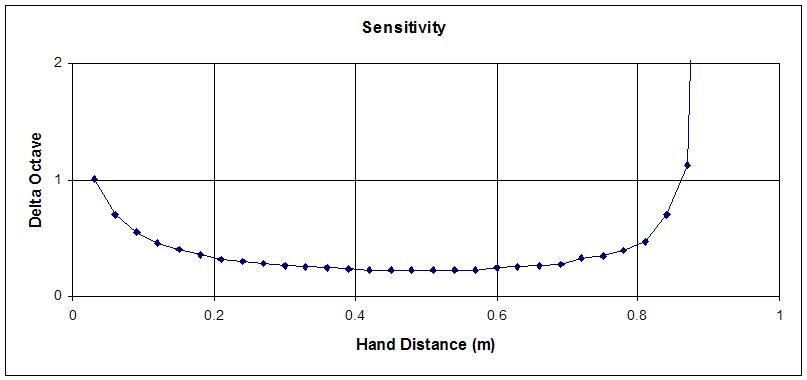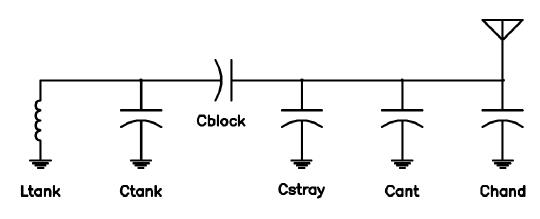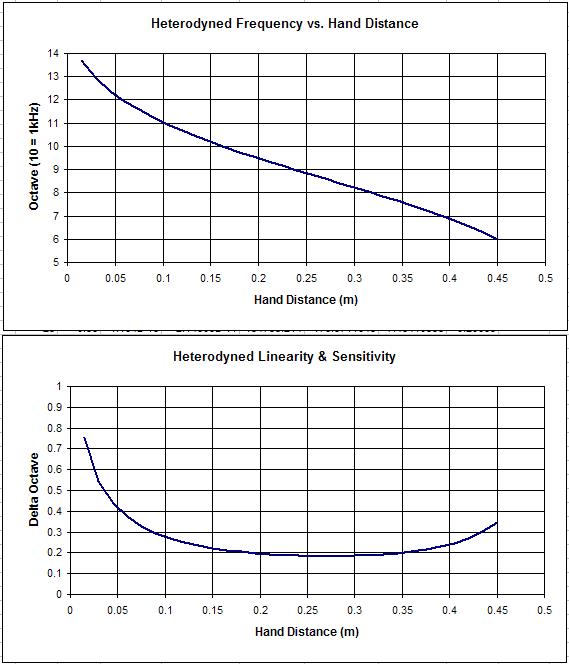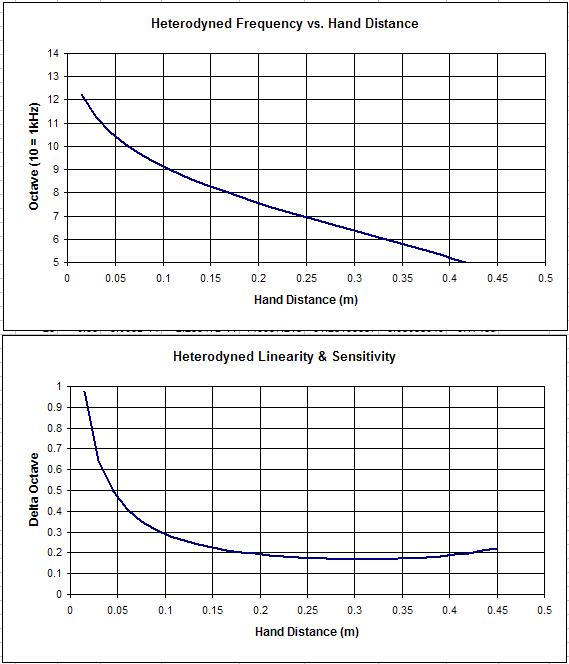"Pulling numbers out of the air, say the schematic for a certain Theremin employs 315kHz oscillators and calls for L=16mH and C=16pF. We look in our junk box and can only find a 1mH inductor. So we scale C: 16pF*[1/[(1mH/16mH)^(1/3)]]=40.3pF and our oscillator now runs at 793kHz but gives us the same heterodyned result." - Dewster
Ok! - I see what you are saying here (at last ;-) Provided one keeps the ratios of L==C as you detail above, the oscillator sensitivity (Hz/pF) will be the same (regardless of actual frequency), and the "invariant" will apply.
In the above example, the selected components (both for the 315kHz and 793kHz versions) give sensitivity to capacitance change of about 9.5kHz/pF. For the sake of argument, lets assume the C-Hand variation over the playing field is 1pF, then after heterodyning one gets (16Hz to 9.5kHz) 9 octaves.
If one increases the 1mH/40pF oscillator capacitance to 100pF, it runs @ ~500kHz with a sensitivity to capacitance change of about 2.5kHz/pF, and after heterodyning one gets (16Hz to 2.5kHz) 7 octaves, and the same would apply if one altered the oscillator frequency making changes to LC in the manner you describe above.
But I still do not get your "Another way of looking at things: altering absolute sensitivity transposes the Theremin, but has no impact on heterodyned sensitivity nor linearity. " - As I see it, 1mH;40pF gives me 9 octaves, 1mH;100pF gives 7 octaves (for a 1pF change and heterodyning with an oscillator running at the highest VFO frequency).. As in, I dont see that one can do capacitance "padding" to "transpose" the frequency without such "padding" altering the sensitivity, and AFAICS one can (with padding) set whatever "sensitivity" (post heterodyning, # octaves) one wants within the playing zone - but the more one packs in, the more non-linear and difficult it will be to play any of them!
I think there may be a problem with the terms "transposition" and "sensitivity" - In essence, I think what you are saying is perhaps "correct" - reducing sensitivity can be seen as "transposition" in that halving sensitivity will reduce the 'span' by one octave and therefore 'transpose' the heterodyned output by one octave.. But as there is an arbitrary lower audio limit (16Hz) to me this is more a sensitivity than a transpose function - transpose would, to me, result in (for example) the 16Hz "location" producing 32Hz, and all other "locations" changing proportionally.
I thought I could see your plan before you presented a mixer directly connected to your oscillators - I was expecting your (superb) high frequency / high sensitivity "antenna" oscillator to drive something like a 4040 to drop its frequency and reduce effective sensitivity prior to mixing with a lower frequency reference, and was even thinking that perhaps you were leading up to a simple register switching implementation - but I am kind of at a loss now... I dont know if you can 'pad' your oscillators sufficiently to reduce their sensitivity without this impacting on the antenna voltage... The idea of high frequency low power oscillators is lovely, and I hope you can pull it off!
fred.
Added ->
I have actually got myself a little confused after writing the above.. The whole "transposition" vs "sensitivity" issue... As I understand the EWP operation, "register" selection is done by dividing both reference and VFO frequencies, prior to heterodyning.. So a location producing say 64Hz will produce 32Hz if the lower octave is selected, and 128Hz if a higher octave is selected.... In this sense though, both transposition and sensitivity change do equate to the same result... ?
But enough! - I really need to stop reading these posts..







